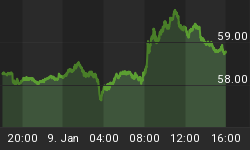Japan's six reactor Fukushima Daichi nuclear complex has inadvertently become the world's bell-weather poster child for the inherent risks of nuclear power ever since the 11 March Tohoku offshore earthquake, measuring 9.0 on the Richter scale, triggered a devastating tsunami that effectively destroyed the complex.
Ever since, specialists have wrangled about how damaging the consequences of the earthquake and subsequent tsunami actually were, not only for the facility but the rest of the world.
The Fukushima Daichi complex was one of the 25 largest nuclear power stations in the world and the Fukushima I reactor was the first GE designed nuclear plant to be constructed and run entirely by the Tokyo Electric Power Company, or TEPCO.
Needless to say, in the aftermath of the disaster, both TEPCO and the Japanese government were at pains to minimize the disaster's consequences, hardly surprising given the country's densely populated regions.
But now, an independent study has effectively demolished TEPCO and the Japanese government's carefully constructed minimalist scenario. Mainichi news agency reported that France's l'Institut de Radioprotection et de Surete Nucleaire (Institute for Radiological Protection and Nuclear Safety, or IRSN) has issued a recent report stating that the amount of radioactive cesium-137 that entered the Pacific after 11 March was probably nearly 30 times the amount stated by Tokyo Electric Power Co. in May.
According to IRSN, the amount of the radioactive isotope cesium-137 that flowed into the ocean from the Fukushima Daiichi nuclear plant between March 21 and mid-July reached an estimated 27.1 quadrillion becquerels.
Why should this matter? Aren't the Japanese authorities on top of the issue?
Cesium-137 can cause burns, acute radiation sickness and even death at sufficient doses. It can contaminate food and water and, if ingested, gets distributed around the body, where it builds up in soft tissues, such as muscles. Over time, it is expelled from the body in urine.
And where might tingested cesium-137 come from?
Seafood, anyone? One of the problems of the release of radioactivity into a maritime environment is that is represents a cumulative food chain, from plankton consumed by larger organisms, as evidenced by mercury contamination of swordfish, none of whom swam around ingesting globules of the silvery metal.
IRSN estimated that of the total amount, 82 percent had flowed into the sea by 8 April, adding that the Pacific was polluted at exceptional speed because the devastated Fukushima Daichi nuclear power plant (NPP) is situated in a coastal area with strong currents.
If the IRSN report contained any good news, it was that the impact of the cesium-137 contamination on marine life in remote waters is likely to lessen later this year.
The radioactive silver lining? Radioactive cesium-137 has a half life of roughly 30 years, so if the IRSN estimates are accurate, then my 2041 the Pacific's aquatic life will only be subjected to a mere 13.55 quadrillion becquerels of radiation.
This is not to suggest that Japanese will shortly be keeling over from consuming their sushi but rather, that for better or for worse, a significant amount of cesium 137 has entered the Pacific's aquatic environment, and the long-term effects of low-level exposure on the population consuming Pacific seafood are unknown. Numerous tests since 1945, when before it was believed that only massive bursts of radiation were hazardous to human health, have documented the insidious effects of long-term, low level radiological exposure to humans.
Fukushima sits at the nexus where the Kuroshio Current, running northward off the eastern coast of Japan, collides with the cold subarctic Oyashio Current that flows southwards, circulating counterclockwise along the western North Pacific Ocean. Their interaction produces the North Pacific Current, a slow warm water eastwards flowing current between 40 and 50 degrees north in the Pacific Ocean. In the eastern northern Pacific, the North Pacific Current divides into the southern flowing California Current and the northern Alaska Current.
The potential level of pollution outlined in the IRSN report indicate that it is long overdue for both TEPCO and the Japanese government to stop dribbling out information about the true state of events since Fukushima was devastated, and that foreign governments, particularly the United States, whose western shores are washed by the same currents that pass by Fukushima, insist that they do so.
While trillions of dollars are at stake in the worldwide nuclear industry, the potential health consequences are now simply too significant to ignore.
By. John C.K. Daly of http://oilprice.com















